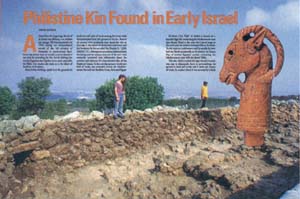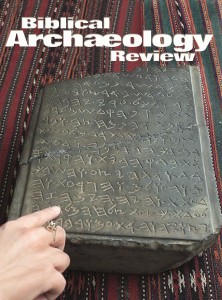Reassessment: Just Another Israelite Village
Zertal Badly Misinterprets His Site, Finkelstein Claims

In a recent issue of BAR, the archaeologist Adam Zertal put forward a theory that was bound to raise eyebrows: The site of el-Ahwat in north-central Israel was not, he argued, an early Israelite settlement (as other scholars have assumed), but a town built by the Shardana, one of the Sea Peoples who invaded Israel in the 12th century B.C.E. (“Philistine Kin Found in Early Israel,” BAR 28:03).
Additionally, Zertal claimed that the Shardana originated from the Mediterranean island of Sardinia—as the tribe’s name would seem to suggest. As evidence, Zertal cited the architecture of el-Ahwat, which appears to be built in the Sardinian style.
Now another prominent archaeologist, Israel Finkelstein, has rejected Zertal’s theory. His rebuttal appears in the Israel Exploration Journal, an eminent but hard-to-find academic journal. Because the Zertal-Finkelstein debate is important to the field of Biblical archaeology, we summarize here its main points for our readers.—Ed.
Already a library member? Log in here.
Institution user? Log in with your IP address.

